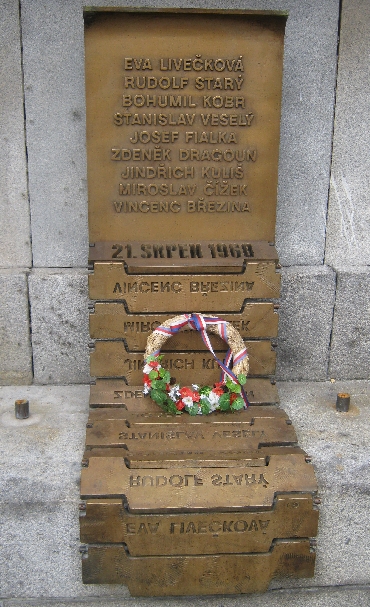
The city of Liberec is situated 110 km north-east of Prague, quite close to the border of the Czech Republic with both Germany and Poland. Known in German as Reichenberg, it lies within the former Sudetenland and had a majority German-speaking population until the vast majority were expelled in 1945-6, at the end of the Second World War.
We paid our first visit to Liberec on my day-off four weeks ago, Monday 8th October. The chief reason for our trip was to visit Liberec Zoo, which is home to a pair of rare White Bengal Tigers, who earlier this year, successfully produced three tiger cubs.
Liberec Zoo is located in a leafy suburb east of the city centre. It has the distinction of being the oldest zoo in the Czech Republic, having been founded in 1919, well before Prague Zoo which was founded in 1931. On the day we visited, there were remarkably few other visitors, and nearly all of them seemed to be German 🙂 It was also noticeable that once any member of the local population realised we were not Czech, we got spoken back to in German!
Whilst we did get to see the white tiger cubs, it was near impossible to get a decent photograph of them. But Sybille did get this photograph below of their mother.


Just outside the building housing the White Tigers and their cubs was this sign. Friends on Facebook will have seen my photograph already as I posted it there the same day as I took it. As I entitled it then;
“In Deutschland wird englisch gesprochen, aber in Großbritannien sprechen wir deutsch – In Germany we speak English, but in Great Britain we speak German.”
And yes – both the English and German texts are in need of considerable improvement. The English text seems to imply that the White Tigers are being bred in the collection box 🙂 It reminds me of a line from a letter written by a lady to her employer explaining her absence from work – “This is to advise you that I have given birth to twins in the enclosed envelope” 😉

There were many other interesting animals and birds to see elsewhere in the zoo including these delightful meerkats.
Later in the afternoon, we drove from the zoo to the centre of the city, parked the car, and set out to explore on foot. In the latter half of the nineteenth century, Liberec was a very prosperous city, home to a thriving textile industry resulting in it being known as the ‘Manchester of Bohemia’. Some of the city’s most significant buildings date from that time including the Town Hall featured in the photograph at the beginning of this post and the F.X. Šalda Theatre pictured below.

Both the Town Hall and the Theatre are situated on the main city square, Námestí Dr. E. Beneše. Here are some more attractive buildings on another side of the same square.


However, the origins of Liberec can be traced back to at least the fourteenth century. These half-timbered houses are some of the earliest remaining buildings still standing within the city and date from 1678-81. They are known as Valdštýnské domky (Czech) or Waldsteinhäuser (German).

Adjacent to the Town Hall is this reminder of more recent history. It is a memorial to those Liberec citizens who died trying to resist the Soviet invasion of August 1968. Most were killed being run over by tanks, hence this memorial, presumably erected since the Velvet Revolution of December 1989, is in the form of caterpillar tracks that are found on tanks. The reversed imprint of the victims names on the lower half of the memorial, bears an uncanny resemblance to writing using the Cyrillic alphabet, the alphabet with which Russian is written.
An even more recent edition to the landscape of Námestí Dr. E. Beneše are these three cats. I had to wait sometime to get this photograph because so many children were busy either jumping on or sitting on them!



































